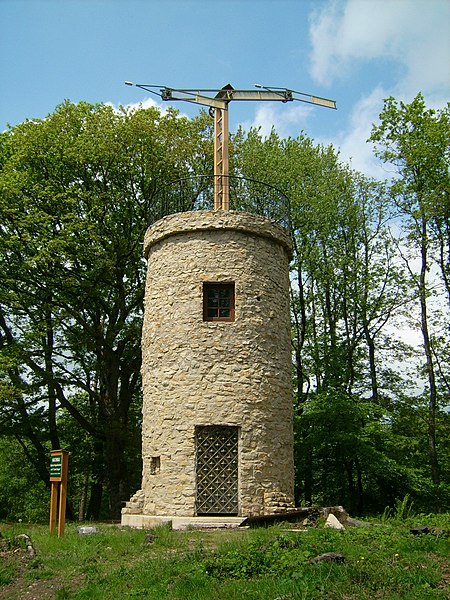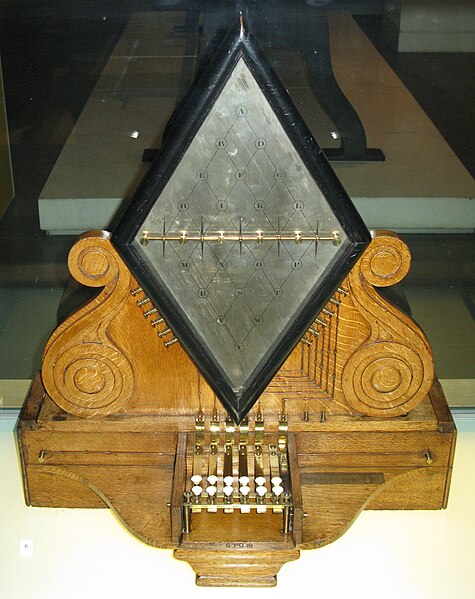The Baudot code is an early character encoding for telegraphy invented by Émile Baudot in the 1870s. It was the predecessor to the International Telegraph Alphabet No. 2 (ITA2), the most common teleprinter code in use before ASCII. Each character in the alphabet is represented by a series of five bits, sent over a communication channel such as a telegraph wire or a radio signal by asynchronous serial communication. The symbol rate measurement is known as baud, and is derived from the same name.
British variant of ITA2
An early "piano" Baudot keyboard
Paper tape with holes representing the "Baudot–Murray Code". Note the fully punched columns of "Delete/Letters select" codes at end of the message (on the right) which were used to cut the band easily between distinct messages. The last symbols before the fully punched columns at the end are BRASIL CR LF CR FS (word Brasil, carriage return, line feed, carriage return, shift to figures)
A four-row teletype keyboard with Roman and Cyrillic letters.
Telegraphy is the long-distance transmission of messages where the sender uses symbolic codes, known to the recipient, rather than a physical exchange of an object bearing the message. Thus flag semaphore is a method of telegraphy, whereas pigeon post is not. Ancient signalling systems, although sometimes quite extensive and sophisticated as in China, were generally not capable of transmitting arbitrary text messages. Possible messages were fixed and predetermined, so such systems are thus not true telegraphs.
Replica of a Chappe telegraph on the Litermont near Nalbach, Germany
Great Wall of China
Cooke and Wheatstone's five-needle, six-wire telegraph (1837)
A Morse key (c. 1900)








